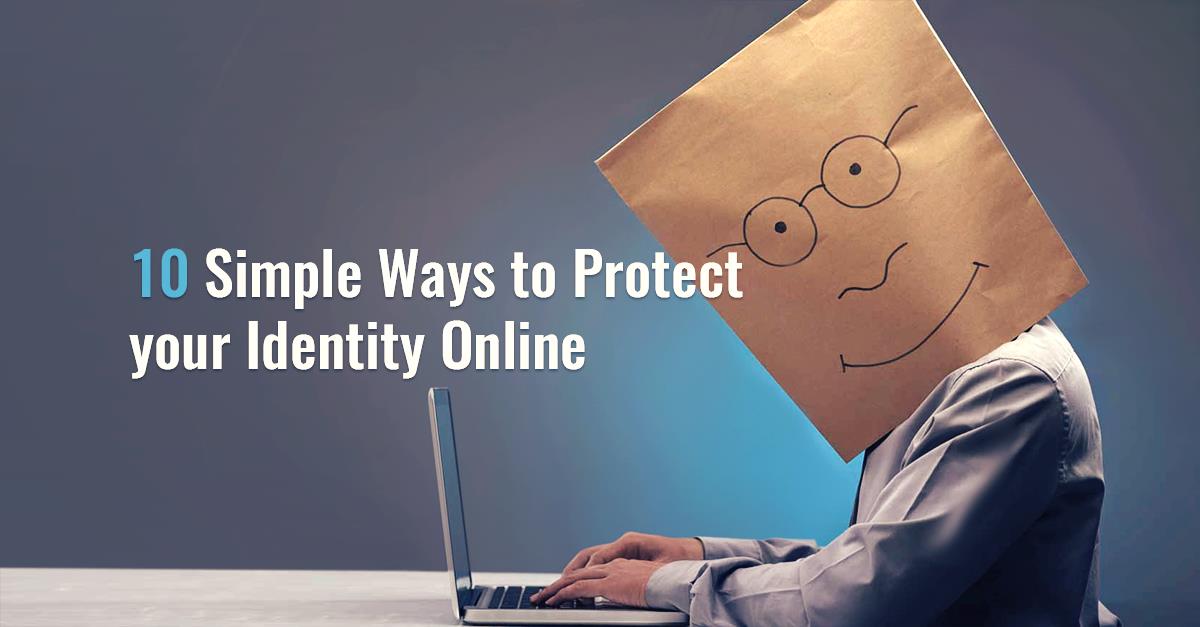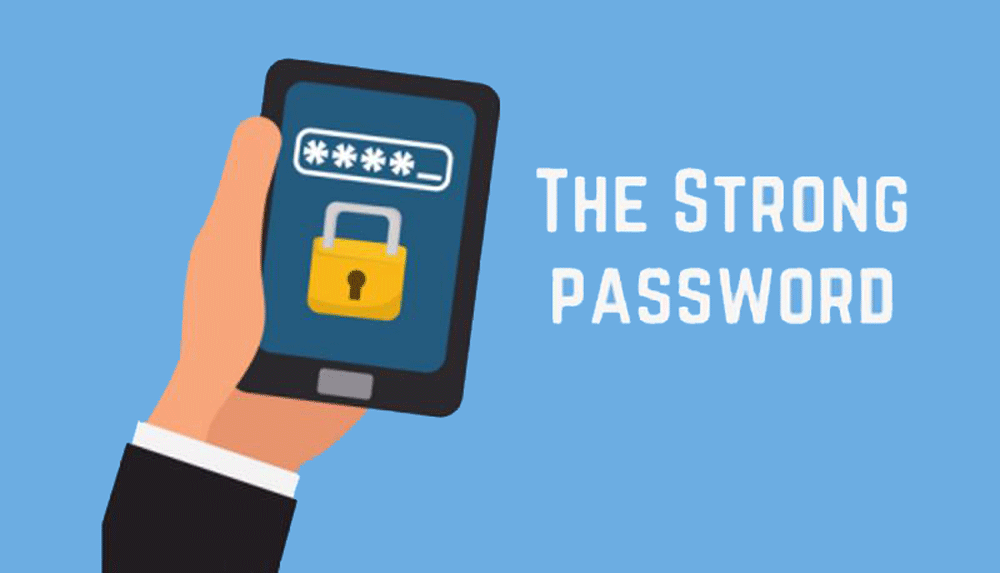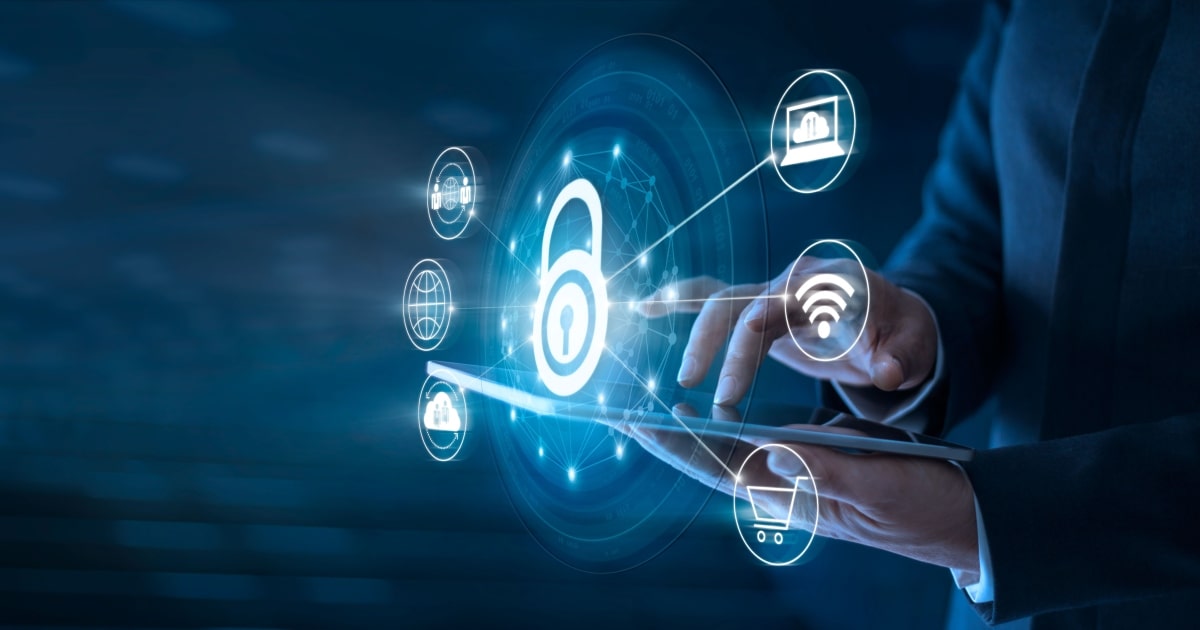Protecting your Online Identity from Data Breaches | 10 Easy Methods
The internet has transformed your lives offering conveniences like online shopping bill payments and social interactions. But with these conveniences come risks. And events like data breaches and identity theft are some of them. Let us give you a clearer picture. The Nerd Series was scrolling through facts online and guess what we found?
Did you know about an increase in identity theft complaints by 40 percent from the year 2018 to 2019? And this is a fact from years ago think about the facts today!
So what does identity theft mean? How can it be harmful to you? Is there a way to avoid it?
As the name says identity theft is when anyone steals your identity like your name or even bank information. Thieves then use them without your permission. They can buy things with your money or take out loans in your name. It can even cause legal troubles for you.
It's a big problem and with more of us sharing details online it's becoming even bigger.
Worried?
We found another fact stating that the US Federal government has stepped in. They are creating departments to research and develop ways to minimize these online risks. Then there are brands like Incogni that specialize in helping people like us keep our details secure. They work to remove your already existing data from different parties.
Though they all are putting in the effort there are several things that you can ensure of.
There are simple steps and tools available to stay safe online. Now let us talk about this blog. We'll walk you through some basics of identity theft and ten easy ways to guard your online identity. We strive to help you protect your privacy protection and keep it intact in the digital world.
Read Next: Get Total Control Over Your Online Privacy With Surfshark Incogni
Understanding Identity Theft
What is it?
Identity theft occurs when someone unlawfully obtains one’s personal information to impersonate them. It is usually for financial gain. This can range from unauthorized credit card purchases to taking out loans in your name.
How Does It Happen?
Cybercriminals employ various methods to steal your identity. These include phishing scams data breaches malware and even old-fashioned techniques like dumpster diving for discarded documents.
The Impact of Identity Theft
Online surfing requires awareness and an understanding of the potential fallout of identity theft. The consequences of this cyber menace can ripple across various facets of our lives:
Personal Consequences:
- Financial strain due to unauthorized transactions.
- Credit damage from fraudulent applications affects future loan or credit card approvals.
- Emotional distress stemming from the invasion of internet privacy.
- Time consumption in rectifying the situation contacting banks and using data removal guides.
Economic Implications:
- Businesses face losses especially if they need to reimburse customers leading to increased service fees.
- Hefty investments in cybersecurity measures often result in higher costs for consumers.
- Reputational harm for companies especially those not prioritizing privacy protection leads to lost trust and reduced profits.
Societal Impact:
- A general reduced trust in digital platforms hinders the growth of online services.
- Legal systems becoming overburdened with identity theft cases.
- Consumers bear increased costs from product prices to fees for enhanced Incogni security services.
Recognizing these impacts underscores the importance of proactive measures in safeguarding our online identity. It can ensure a secure and fulfilling digital journey. Let’s also walk through the measures of protecting the online identity from data breaches:
1. Using Strong Passwords
Passwords serve as our primary guardians. Think of them as the sturdy locks on the doors of our online homes. A weak password is akin to a flimsy lock easily broken by intruders. With the rise of the sophistication of cyberattacks it's necessary to have robust passwords. They protect our personal and financial details and even protect internet privacy. A compromised password can lead to a cascade of unauthorized activities putting our online identity at risk.
How To Do It?
- Opt for complex passwords that defy easy guesses. Steer clear of obvious choices like names or birthdays.
- Blend uppercase and lowercase letters numbers and symbols for fortified privacy protection.
- Refresh your passwords periodically ensuring they remain unpredictable.
- Consider password managers to manage multiple passwords.
2. Switch on Web Browser Blacklisting
The internet also harbors potential threats. Some websites can deceive harm or extract information from unsuspecting visitors. These malicious sites can deploy viruses malware or phishing schemes to compromise our devices or steal our data. Blacklisting is your browser's way of keeping a vigilant watch. It ensures you don't inadvertently step into these online traps. By identifying and blocking such sites blacklisting is a proactive measure to bolster our internet privacy and security.
How To Do It?
- Choose browsers equipped with blacklisting capabilities to auto-block harmful sites.
- Manually add any suspicious sites to your blacklist ensuring a layered defense.
- Stay updated with emerging online threats and adjust your blacklisted sites for optimal privacy protection.
3. Beware of Phishing Scams
Phishing scams are cunning maneuvers by cyber criminals. They are designed to deceive and extract sensitive information from unsuspecting individuals. These scams can appear as genuine emails or messages from trusted entities. For example banks or government agencies. Falling prey to tactics can result in unauthorized access to personal as well as financial data. It compromises internet privacy and leads to potential financial losses or identity theft.
How To Do It?
- Be skeptical of unsolicited communications especially those urging immediate action.
- Examine email addresses and URLs closely to ensure authenticity.
- Avoid clicking on unfamiliar links or downloading attachments from unknown sources.
- Employ privacy protection tools that can identify and block phishing attempts.
Read Next: Surfshark Incogni Review: How Does It Work Pricing and More!
4. Hide Personal Information
Every day you share many personal details online from your names and addresses to your shopping habits and locations. If this data falls into the wrong hands it can be used maliciously. It can lead to identity theft or even financial fraud. Protecting this information is paramount in today's digital age.
How To Do It?
- Be cautious about what information you share on social media platforms. Avoid sharing sensitive details such as your home address contact number or location.
- Regularly review and change the privacy settings on your online profiles and social media accounts.
- Look for ways you can block ads and data tracking. Your goal is to ensure your online actions are private.
5. Regularly go Through Your Credit Report
Your credit report comprises a history of your credit transactions. This can include details of loan paying history and even the status of your credit accounts. If someone has taken out a loan in your name or is misusing your financial data it will show up here. Regular checks can help you spot and rectify any unauthorized activities before they escalate.
How To Do It?
- You're entitled to a free credit report every 12 months from each of the three major credit bureaus. Make use of this and review your report for any discrepancies.
- Some services allow you to set up alerts for any significant changes in your credit report.
- If you find any unauthorized accounts or transactions report them immediately. You can approach the credit bureau and the respective financial institution for that.
6. Share On Your Social Media Mindfully
In today's digital age your online persona can reveal more about you than real-life interactions. Social media platforms while connecting you with loved ones can inadvertently expose us to cyber threats. Every image status update or check-in can be a piece of a puzzle that cybercriminals use to decipher our lives. This can lead to potential threats like identity theft or even real-world stalking.
How To Do It?
- Platforms like Facebook and Instagram offer granular privacy settings. Ensure that your posts are visible only to trusted circles and not public.
- Reflect on the implications of your post. Avoid sharing sensitive details such as vacation plans home addresses or work details that can be exploited.
- Your views and the information we share evolve. Periodically review and clean up your old posts and photos. Remove content that might be too revealing or no longer aligns with your perspective.
7. Use Anti-virus Software
The digital realm is rife with malicious entities. Malware viruses and spyware are not just threats but also tools that cybercriminals deploy with precision. They can infiltrate devices steal personal information corrupt files and even hijack computer operations. Ensuring your devices are shielded from these threats is not just about privacy protection; it's about safeguarding your digital life.
How To Do It?
- Not all anti-virus solutions are created equal. Opt for software that has a strong reputation positive reviews and is known for regular updates to combat the latest threats.
- Even with real-time protection schedule deep scans of your computer and other devices. This ensures that no hidden threats go undetected.
- Stay Informed: The world of malware is ever-evolving. Subscribe to cybersecurity news or forums. Being aware of the latest threats helps you take proactive measures.
8. Look For Encryption
Encryption is the unsung hero of our online transactions. Every time you exchange data it travels through multiple points. Without encryption this data acts like an open book which can be read by anyone who intercepts it. Encryption scrambles this data turning it into a complex code. Only people with the 'key' can decode and manage the information. It ensures your internet privacy remains uncompromised and your sensitive details.
How To Do It?
- Before sharing or transacting online check for "https" in the website's URL.
- A lock symbol on your browser is a testament to the site's privacy protection measures.
- Prioritize platforms that champion encrypted communications especially for sensitive discussions.
9. Be Cautious About Wi-Fi Links and Attachments
The convenience of public Wi-Fi and the curiosity about unknown links can sometimes be our downfall. Cybercriminals often exploit these avenues setting up traps for the unsuspecting user. A click on a malicious link or connecting to a compromised Wi-Fi can expose your device and all its data to prying eyes.
How To Do It?
- Public Wi-Fi networks are rarely secure. If you must connect avoid accessing sensitive sites or apps. Better yet use a VPN to encrypt your data ensuring it remains private even on public networks.
- Phishing scams are rampant. Always hover over links to see the actual URL before clicking. If something looks off trust your instincts and avoid it.
- Cybercriminals often use email attachments as trojans to introduce malware. Always verify the authenticity of the sender and the relevance of the attachment before opening.
10. Reach Data Brokers
Data brokers operate in the shadows collecting storing and sometimes selling personal information. While some have legitimate purposes others might distribute data without consent. It can lead to unwanted marketing or even identity theft. Engaging with these brokers to understand and control the data they possess is crucial for comprehensive internet privacy.
How To Do It?
- Utilize services like Incogni to navigate the data broker landscape and ensure optimal privacy protection.
- They can identify and reach data brokers to request your data profile.
- They can request data removal where necessary.
How Incogni Works?
While we have given you the details about staying precautious it’s necessary to look after already existing data. So to give you a broader picture let’s tell how Incogni can be of help. Take a look here:
- Data Scanning: Incogni's advanced algorithms tirelessly scan the internet. It sifts through databases forums and even the elusive dark web in search of any traces of your personal details.
- Real-time Alerts: Should your data surface in unexpected corners of the web Incogni promptly sends real-time alerts. This proactive approach ensures you're always a step ahead of potential threats.
- Data Removal: Armed with its comprehensive data removal guide Incogni not only identifies threats but also empowers users to act. It guides them in removing their personal information from unauthorized platforms.
- Ongoing Monitoring: The digital landscape is ever-evolving and Incogni adapts seamlessly. Post initial scans it remains vigilant continuously monitoring the web for any reappearance or misuse of your data.
Harnessing the power of technology and a commitment to user safety Incogni offers a holistic solution for those keen on fortifying their online presence against cyber threats.
Conclusion
In the vast expanse of the digital universe your online identity is akin to a fingerprint – unique personal and revealing. After learning about the intricacies of online threats and the importance of safeguarding digital selves the role of proactive protection becomes abundantly clear. Fortunately there are many measures you can take. From mindfully sharing on social media to employing specialized services like Incogni for enhanced privacy protection every step counts.
But beyond the tools and techniques it's the awareness and the commitment to one's digital safety that makes the difference. As we continue to embrace the conveniences of the online world let's pledge to be responsible citizens. Remember in cyberspace knowledge is your armor and vigilance is your sword. Stay informed stay safe and let the digital age be an era of empowerment not vulnerability.
Thank you for joining us on this journey at The Nerd Series. Together let's champion a safer more secure online experience for all.


